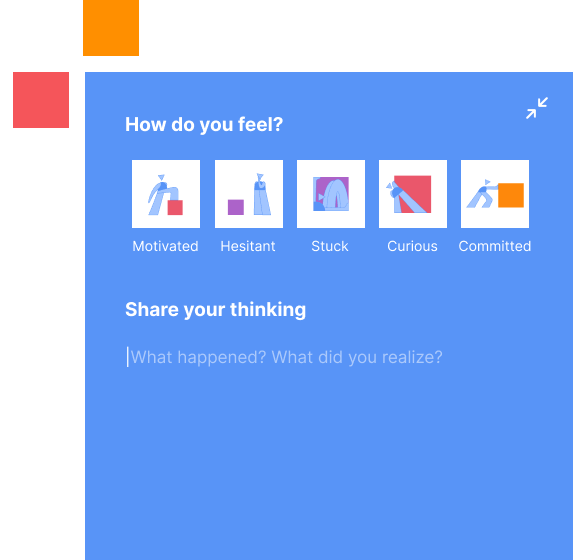
Ask teachers if they reflect, and nearly 100% will say yes.
For many, this reflection happens through an informal web of internal dialogue, sticky notes, and casual conversations.
But when professional learning initiatives ask (or require) teachers to reflect, the external pressure can make the task feel daunting.
- Where should I start?
- What should I reflect on?
- Should I discuss my strengths? Weaknesses? Both?
- How in depth should I go?
The stress of how to reflect can outweigh the benefits of the act and reduce its value.
Fortunately, Swivl has built Reflectivity to offer teachers a flexible answer to the questions above.
Reflectivity (formerly Swivl Teams) makes reflection a simple yet engaging way to share ideas and get feedback. The reflection experience in Reflectivity is inspired by the 4Fs Framework, developed by Dr. Roger Greenaway.
Because Reflectivity’s reflection experience includes both flexibility and structure, teachers gain the autonomy and support needed for a successful reflection routine.

Fact:
What happened?

Findings:
What did you realize?

Feelings:
How did it make you feel?

Future:
What are next steps?
The 4Fs are built in to Reflectivity to help you reflect with purpose

Each step of the 4Fs is integrated into the design of Reflectivity’s reflection experience. First, teachers can identify their feelings by selecting a word that best matches their current state. Then, they can then dig deeper into the facts of their recent experiences, and their findings about those events. Lastly, teachers can make a plan for the next step in the future of their reflection process.

Fact:
What Happened?
What exactly happened? What were all the steps you saw or remember happening, in order. Do not think about the emotions or the behaviors.

Findings:
What Did You Realize?
Are you able to make any conclusions from the event that you reflected on? What were the cause and effect moments?

Feelings:
How Did You Feel?
Now is the time to think about your emotions. Did your emotions play any role, positive or negative, into the event? Did your emotions indicate to you that something you planned should have changed?

Future:
What are your plans for next steps?
Based on what you learned from noticing what happened, some conclusions you made, and how you felt throughout the whole process, how can you either recreate or improve what was done and reflected on?
Learn more about how to develop more meaningful, purposeful reflection with Reflectivity
Contact us at success@swivl.com